This pasta with ricotta and tomato sauce is one of our favourite pasta dishes. The sauce is rich, creamy and super comforting and comes together in just under 20 minutes.
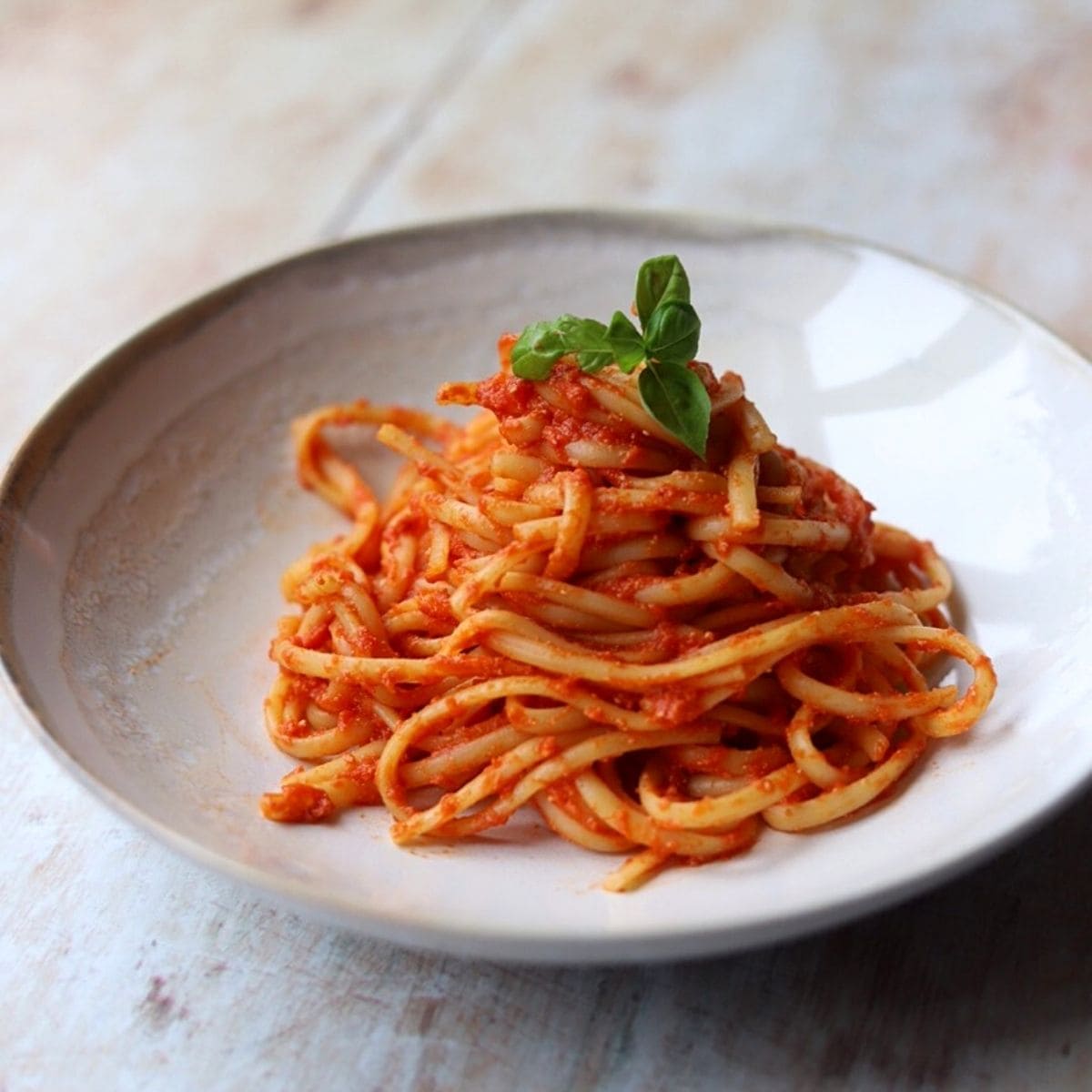
This is a great pasta night recipe that is fast and delicious and one that will certainly please the family! It uses just a few simple but very flavoursome ingredients.
You can use any pasta you like to make this, preferably one that is able to hold the sauce well.
This recipe uses a simple classic Italian tomato sauce.
Prepare the tomato sauce from scratch for best flavour rather than buying a ready made one from the store. Ricotta cheese is melted into the sauce to give a wonderful creamy richness.
Serve it immediately in large bowls with some freshly grated parmesan cheese and fresh basil, any of these side salads and some crusty bread.
See below for answers to all your commonly asked questions.
For more pasta dishes check out our pasta with gorgonzola sauce, pasta with shrimps or this basil pesto sauce with any shape pasta. And if you are in the mood for a comforting pasta soup try our pasta fagioli soup or authentic Italian minestrone soup.
Click the Subscribe button above to get more recipes like this into your inbox.
Jump to:
Ingredient notes
A few notes on ingredients for this creamy tomato and basil pasta.
Tomatoes – use a good brand of canned tomatoes, it makes so much difference to the flavour. We like Cirio or Mutti canned tomatoes as they are not too acidic, for their rich flavour and they are easily available in our area.
Pasta – We used linguine here but this sauce is just as delicious with any type of pasta. You could try it with paccheri, penne, rigatoni or gnocchi.
Basil – Select fresh medium size leaves for best flavour and tear into halves or quarters to release the oils and flavour before using. Tearing basil leaves releases more flavour.
Tips for boiling pasta
- To boil the pasta, ensure the pan is filled with enough water so the pasta cooks fully submerged. The pan needs to be large enough so boiling water can move around each piece of pasta. This way the pasta will cook uniformly not stick together.
- Salt the water at the beginning, before it comes to a boil then stir so it becomes salted throughout.
- Add the pasta in one go then stir with a wooden spoon so it doesn’t stick together.
- Do not add oil as it will rise and float to top affecting the temperature of the water and cooking time.
- There is no standard time for cooking pasta as cooking times will vary depending on the shape and type of grain used. Cook the pasta one minute less than the time on the packet so that last minute can be used to cook the drained pasta with the sauce. Watch the clock as undercooked pasta will be raw inside and inedible, while overcooked pasta will be soft, starchy and sticky and won’t taste good at all.
- When draining the pasta water away, reserve a small amount (around 120 millilitres, or half a cup) of the starchy pasta water to mix into the sauce as it will help the sauce stick to the pasta and add creaminess.
Tips to make the sauce
- For a smoother sauce use a potato masher, a hand blender or jars of sieved tomato sauce (passata).
- The amount of pasta sauce required should be just enough to coat all the pasta and not make the pasta ‘soupy’.
- Tear the basil leaves rather than chopping them, to release more flavour and avoid bruising.
- The tomato sauce can be made ahead without the ricotta then stored in the fridge for up to 3 days or kept frozen for up to three months. Thaw and reheat, then stir in the ricotta before using.
- After adding ricotta, the sauce will thicken slightly.
Your questions answered
To prevent the garlic from burning add it to the olive oil before turning on the heat, then turn the heat on to low. This allows the oil and garlic to slowly heat up, releasing more flavour.
After boiling pasta, reserve approximately half a cup of the starchy pasta water to help mix the sauce with the pasta. This also gives a little extra creaminess to sauces, gravies and soups.
Do not add oil to the water when boiling pasta! The oil will float to the top preventing water evaporation and trapping heat thus overcooking the pasta. Instead, to prevent pasta from sticking, use a pan large enough so the water is able to move around the pasta and it does not cook in a large clump.
Ricotta contains solids and whey which makes it appear grainy. To make ricotta appear smoother, wrap it in cheesecloth then place in a strainer over a bowl, gently pressing to remove the liquid. Place a heavy jar on top to compress the ricotta and keep it in the fridge to drain for anywhere from 2-8 hours. This will give a much smoother ricotta.
Storing
This pasta is best when freshly prepared and it is not suitable for storing, however, the sauce can be made ahead and kept in a sealed container in the fridge for up to 4 days.
See my helpful tips above for a partial make-ahead suggestion.
You may also like …
🍅 Are you making this recipe for Pasta with ricotta and tomato sauce? I’d love to know how it turned out, do let me know in the comments below.
Instagram – I love seeing your creations, so post a picture, tag @endofthefork and hashtag #endofthefork
Recipe
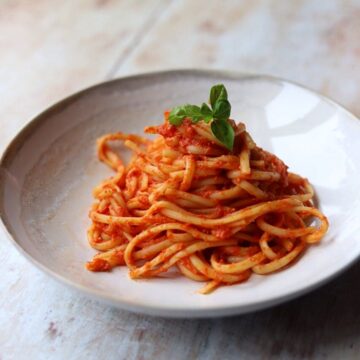
Pasta With Ricotta And Tomato Sauce
Ingredients
Pasta
- linguine - 1 pound packet, or any other pasta 500 grams
- water - for boiling
- salt 1 tablespoon
Ricotta tomato sauce
- olive oil 2 tablespoons
- garlic - medium cloves, finely sliced 2 cloves
- canned tomatoes - 28 ounces 800 grams
- salt 1 teaspoon
- ricotta cheese - 3½ ounces or ½ cup 100 grams
- parmesan cheese - for grating
- fresh basil leaves - reserve a few for garnishing 10 medium
Instructions
Sauce
- Add 2 tablespoons olive oil and 2 cloves garlic to a large skillet then turn heat to low.
- Once the garlic has softened, stir in 800 grams canned tomatoes and 1 tablespoon salt. Cover and simmer for 15 minutes stirring occasionally then turn off the heat.
- Stir in 100 grams ricotta cheese, then tear 10 medium fresh basil leaves and add to the sauce mixing well.
Pasta
- Fill ¾ of a large saucepan with water, add 1 teaspoon salt and bring to a rolling boil.
- Add 500 grams linguine and cook to 1 minute less than the time indicated on the instructions. Drain the pasta reserving 120 millilitres or ½ cup of the pasta water in a small bowl and set aside.
Combine pasta and sauce
- Replace the pan with pasta on the stove, pour in the sauce and mix till the pasta is fully coated. Cook for another minute on a medium heat, stirring constantly, adding the pasta water. Remove from the heat and serve with freshly grated parmesan cheese and fresh basil.
Notes
Tips for boiling pasta
- We used linguine here but this sauce will go with any type of pasta. You could try it with paccheri, penne, rigatoni and even gnocchi.
- To boil the pasta, ensure the pan is filled with enough water so the pasta will be fully submerged. The pan needs to be large enough so boiling water can move around each piece of pasta. This way the pasta will cook uniformly not stick together.
- Salt the water at the beginning and before it comes to a boil so it flavours all the water.
- Add the pasta all at once then stir with a wooden spoon.
- Do not add any oil as this will just float on top and affect the temperature of the water.
- Watch the clock as cooking times for pasta will vary depending on the type of wheat used. Cook the pasta one minute less than the time on the packet as that last minute will be used to cook the drained pasta with the sauce. Undercooked pasta will be raw inside and inedible, while overcooked pasta will be soft, starchy and sticky and won’t taste good at all.
- When draining the water away, reserve a little (around half a cup) of the pasta water on the side to mix with the sauce so it helps coat the pasta and gives a little creaminess to the sauce.
Tips for making the sauce
- Use a good brand of canned tomatoes, it makes so much difference to the flavour as the tomatoes will be richer and less acidic.
- To prevent the garlic from burning, add it to the olive oil then turn the heat on low, so the oil and garlic slowly heat up releasing flavour.
- For a smoother sauce use a potato masher, a hand blender or jars of sieved tomato sauce (passata).
- The amount of pasta sauce required should be just enough to coat all the pasta and not make the pasta ‘soupy’.
- Tear the basil leaves rather than chopping them, to release more flavour and avoid bruising.
- The tomato sauce can be made ahead without the ricotta then stored in the fridge for up to 3 days or kept frozen for up to three months. Thaw and reheat, then stir in the ricotta before using.
- After adding ricotta, the sauce will thicken slightly.
ADD NOTES
Only you will see your notes and you can edit them anytime.
Nutrition
Nutritional information is calculated automatically per serving and accuracy cannot be guaranteed.
Content and photographs @ endofthefork.com are copyright protected. Sharing of this recipe is encouraged and appreciated, however copying and pasting full recipes to social media or other platforms is strictly prohibited.

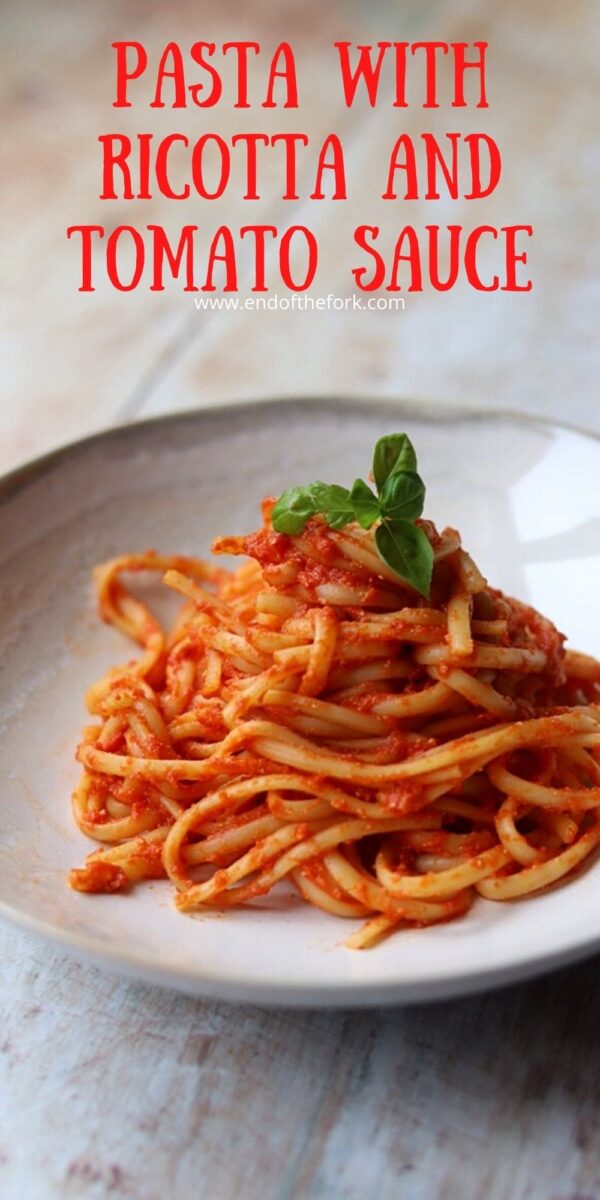
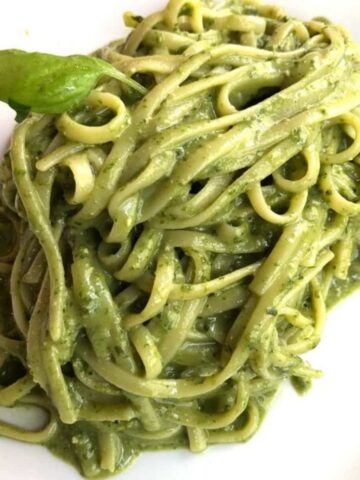
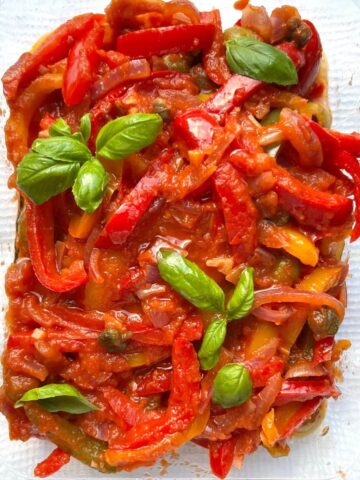
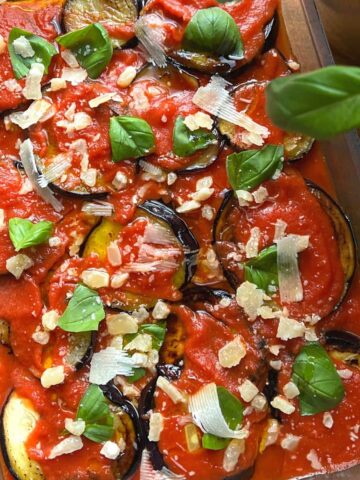
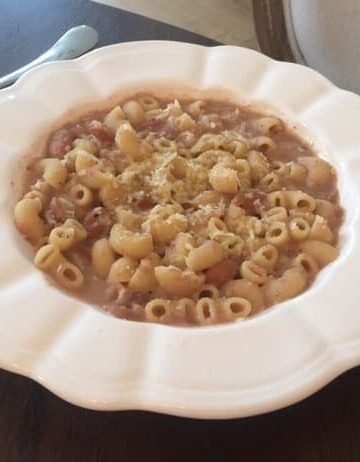
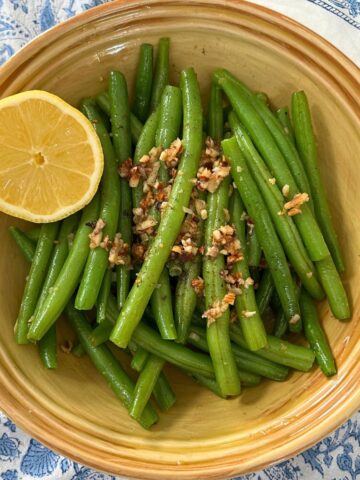

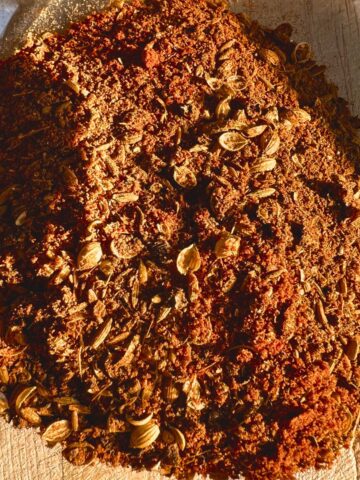
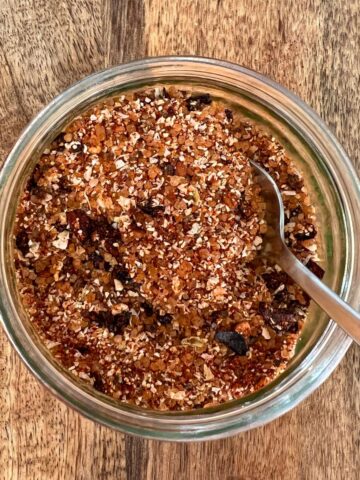
Comments
No Comments